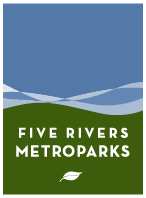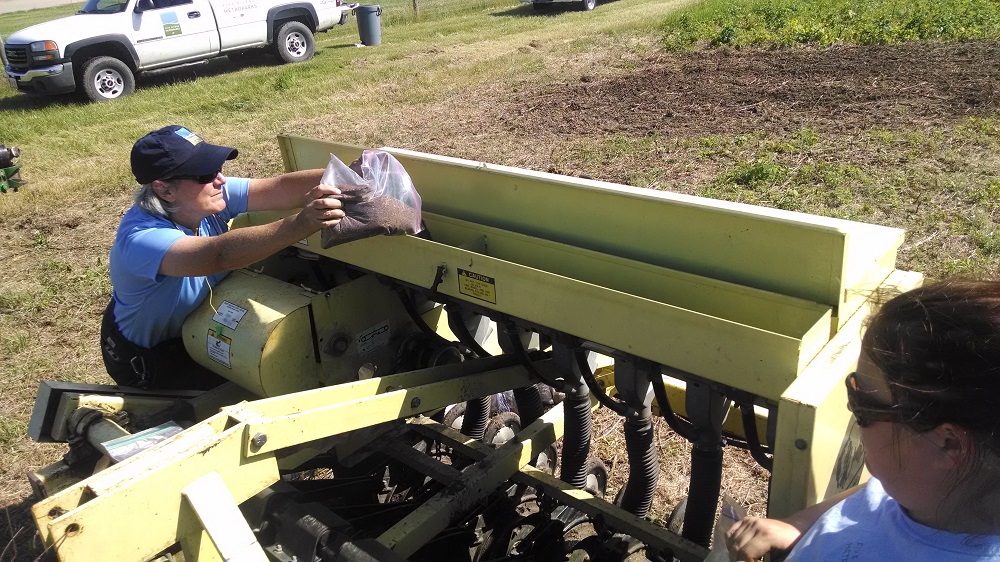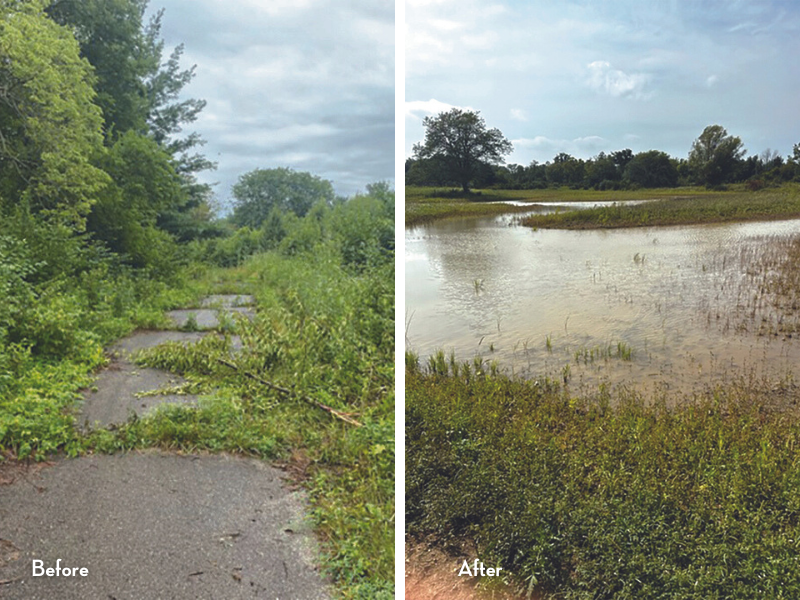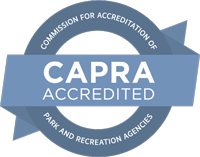Published August 26, 2022
Five Rivers MetroParks wins state grant to restore wetlands at Trotwood site
Heads up! This article was published 2 years ago.
Land once slated to become a landfill is one step further toward a long-term vision of becoming a new MetroPark.
Five Rivers MetroParks and the Ohio Department of Natural Resources (ODNR) held a groundbreaking on Friday, Aug. 26, for the Spring Run Conservation Area Wetland Restoration Project in Trotwood. The project is fully funded by a $499,500 grant, just $500 short of the maximum amount available, from Gov. Mike DeWine’s H2Ohio initiative — which, unlike most grants, does not require local matching funds. Five Rivers MetroParks has partnered with ODNR, the U.S. Fish and Wildlife Service, and Pheasants Forever on this project.
“This is a great example of how MetroParks staff come together to make things happen,” said Becky Benná, Five Rivers MetroParks chief executive officer. “MetroParks’ 10-year comprehensive master plan identified this area as underserved, and MetroParks wants to eventually create a new MetroPark at the Spring Run Conservation Area. A site master plan has been created for the area and, working with the city of Trotwood and other partners, MetroParks is gradually acquiring the means to make that happen.”
The Spring Run Conservation Area Wetland Restoration Project is the 76th H2Ohio project in the state, with most projects located in northern Ohio.
“We feel very fortunate to be one of just a handful of H2Ohio projects in southwest Ohio,” said Grace Dietsch, MetroParks regional manager of conservation.
About the Spring Run Conservation Area Wetlands Restoration Project
The 550-acre Spring Run Conservation Area is comprised of two land parcels: the 190-acre former Larch Tree Golf Course and the 360-acre Great Miami Wetland Mitigation Bank, the property once planned to become a landfill. Spring Run is adjacent to the 2,384-acre Sycamore State Park — creating a nearly 3,000-acre natural area for wildlife habitat and open space protection west of Dayton in Montgomery County.
The Wetlands Restoration Project will create approximately 22 acres of wetlands on the former golf course property. Once complete, the 20-month project will have numerus benefits, not only for Spring Run but for surrounding areas as well — including improved water and air quality.
The project will:
- filter pollutants from groundwater to improve water quality and drinking water
- reduce flooding and erosion
- significantly expand wildlife habitat
- create additional public access to a large natural area for an underserved community near Dayton
- expand outdoor recreation opportunities for the region’s residents
- improve biodiversity by removing invasive plants and introducing native ones
- provide additional scientific research opportunities
Acting as the kidneys of our ecosystem, wetlands improve water quality and help with flood abatement while providing plant and wildlife habitat. The new wetlands at Spring Run will store approximately 33 million gallons of water.
Five Rivers MetroParks has experience restoring wetlands at other sites, such as at Germantown MetroPark and the Great Miami Wetland Mitigation Bank. Spring Run, like these and countless other sites throughout Ohio, once had naturally occurring wetlands that were purposefully drained decades ago so the sites could be used for farmland. Spring Run has a high concentration of hydric soils, which are permanently or seasonally saturated by water — making the transition from golf course back to wetlands more successful.
The Spring Run Conservation Area Wetlands Restoration Project will include a variety of tasks, including:
- Heavy equipment will be used to used to create shallow depressions and other areas that hold water from both underground springs and rainwater.
- Pollinator plants that thrive in wetland environments will be planted along the edges of the wetlands, and native trees and shrubs will be planted near the wetlands to create shade and wildlife habitat.
- Logs and limbs will be scattered throughout the wetlands to create refuge and perching areas for wildlife.
The H2Ohio grant already has allowed MetroParks to purchase two pieces of much-needed equipment that will be used to complete this project and for ongoing management of this site.
“When Gov. DeWine announced $5 million in H2Ohio grant funding for projects in the Ohio River Basin, I knew it was time for something to happen at the golf course,” Dietsch said. “Five Rivers MetroParks is a conservation agency with a mission to protect our region’s natural heritage, so this project is a perfect fit for the H2O initiative and its goals to restore and enhance wetlands.”
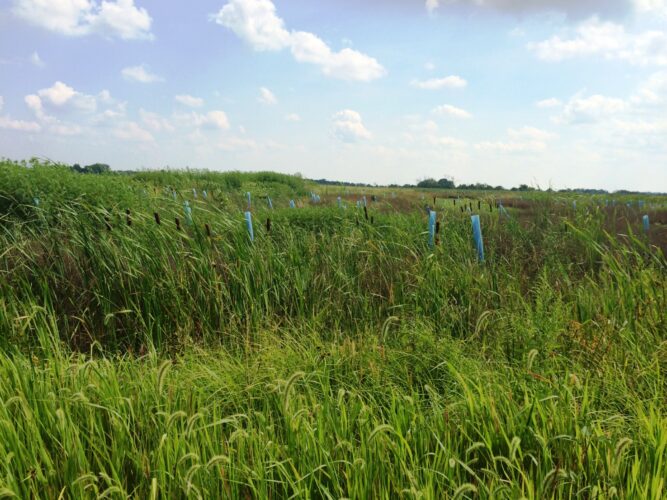
More About Spring Run Conservation Area
Spring Run is located in the Wolf Creek Watershed, part of the Great Miami Watershed — the largest in Ohio, which provides water to more than 2.3 million people.
Five Rivers MetroParks purchased the Great Miami Wetland Mitigation Bank in 2008 and has since been converting the former farmland to a natural area. It now includes several different habitats, including 25 acres of wetlands along with prairie, forest and grassland habitats. The land is home to such native plants as swamp milkweed — a food source for the now-endangered monarch butterfly.
One result of MetroParks’ restoration work at the Mitigation Bank thus far: The area has become a significant birding site. According to data from the citizen science app eBird, the public has spotted more than 200 species of birds, some of them rare, at Spring Run Conservation Area — which is about half of all species that even live in or migrate through Ohio.
The Mitigation Bank also serves as a regional economic development tool: If an existing wetland is damaged, qualified developers can purchase federally required credits from the Great Miami Mitigation Bank. The funds are used to restore wetlands at the Mitigation Bank and support other projects in MetroParks. Because wetland banks are on larger tracts of land and are permanently protected, they are more effective at replacing the wetlands that are lost.
Five Rivers MetroParks purchased the former Larch Tree Golf Course in 2014 with a Clean Ohio grant and was one of first park agencies to take over a closed golf course, which is now an industry trend. Since the purchase, MetroParks has demolished dilapidated structures that were on the site but little else has been done.
The Spring Run Conservation Area Wetlands Restoration Project marks the first significant work to be done on the former golf course property.
Spring Run is located near the Wolf Creek Paved Trail, and several of the former golf cart paved paths are still intact. Long term, both are part of Five Rivers MetroParks’ vision to transition Spring Run from a conservation area to a MetroPark.
“The Spring Run MetroPark master plan creates an environment that showcases the natural habitats and creates a comfortable introduction to experiencing nature for those who may not be accustomed to spending time outdoors,” Dietsch said.
“Area residents are already using the area for walking, birding and fishing, and when this project is done, the site will have 50 acres of wetlands for wildlife and people to enjoy,” Dietsch said. “This certainly will be one of the most significant and impactful projects I will work on in my career.”
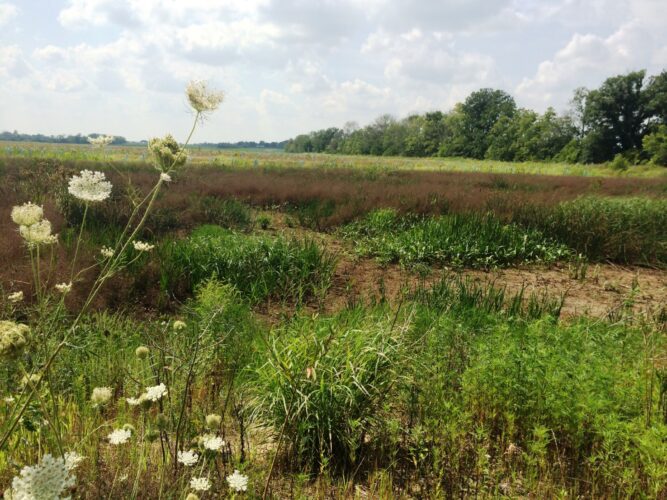
How to Visit Spring Run Conservation Area
Conservation areas are part of the nearly 16,500 acres of land MetroParks owns and manages. Unlike MetroParks’ 18 clean, safe parks, most conservation areas — including Spring Run — don’t have developed public access, such as a paved parking lot, or amenities found at most MetroParks, such as restrooms and water fountains.
However, Spring Run, 2765 North Snyder Road, is open to the public. Parking, including a handicap space, is available outside the gate. Five Rivers MetroParks locations are open 8 a.m. to 10 p.m. April 1-Oct. 31 and 8 a.m. to 8 p.m. Nov. 1-March 31.
ABOUT H2OHIO
H2Ohio is Governor Mike DeWine’s initiative to ensure safe and clean water in Ohio. It is a comprehensive, data-driven approach to improving water quality over the long term. H2Ohio focuses on encouraging agricultural best management practices, restoring, and enhancing wetlands, and replacing home septic systems to reduce nutrients that contribute to harmful algal blooms. For more information on the H2Ohio initiative, please visit h2.ohio.gov.
